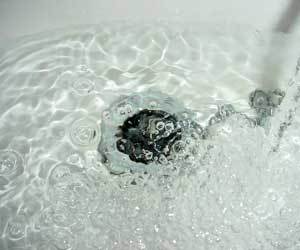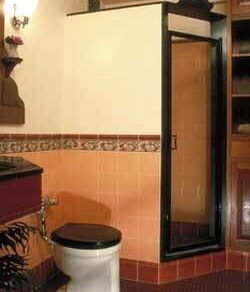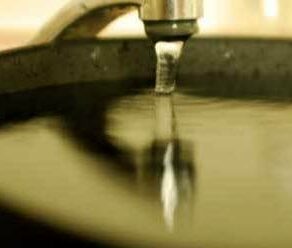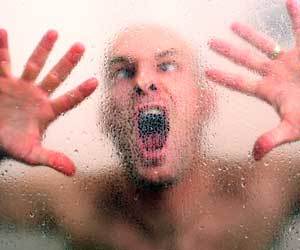
Table of Contents:
A clogged drain is a dirty drain. Shower, tub, and bathroom sink drains can become clogged with hair, soap residue, toothpaste, or just about anything. Follow these instructions to clear a partially or fully clogged drain.
What You’ll Need
- White vinegar
- Cloth or old toothbrush
- Screwdriver (optional)
- Straightened coat hanger or wire
- Plunger or frisbee
- Hand auger (also called a snake)
- Bucket
- New rubber gaskets (optional)
- Wrench (optional)
- Baking soda (optional)
- Cola (optional)
The Cleaning Process
- Remove the drain stopper and clear out any hair or debris that has accumulated. This should be done at least once a week! Always remove the stopper before cleaning your sink or bathtub (to prevent soap build-up) and then rinse it before replacing it.
- If the stopper itself has soap residue, use white vinegar to clean it—either with a cloth or an old toothbrush.
- If you cannot remove the stopper, use a small brush to clean around and inside it as best as you can.
- Shower floor strainers can be cleaned by unscrewing them off of the floor and rubbing them with white vinegar.
- Unclog the drain by using a straightened coat hanger to reach into the drain and either push the clog through or pull it out.
- If you are unsuccessful in removing the clog this way, use a plunger.
- Cover the opening of the drain with the head of the plunger.
- Plug any other outlets to the drain (such as the overflow opening in a tub) with a rag to create a vacuum.
- Fill the sink or tub with enough water to cover the head of the plunger.
- Pump the plunger 5-6 times and pull it out quickly. Repeat as many times as necessary.
- Flush the drain with very hot water to clear any loosened debris.
- If the plunger doesn’t work, use a hand auger (also called a snake).
- It consists of a cable that is released into the drain until it hits resistance. You then use a hand crank to either push the debris through or pull it out.
- Once again, flush the drain with very hot water to clear any loosened debris.
- If you don’t have a plunger, you can use a Frisbee (according to Graham and Rosemary Haley’s Haley’s Cleaning Tips). Just fill the sink with hot water, place the Frisbee over the drain hole and pump is hard several times.
- If the snake doesn’t work, then the clog is probably in the sink trap (the U-shaped pipe the connects to the drain.
- According to Good Housekeeping’s Household Handbook, many traps have a cleaning plug. In this case, place a bucket underneath the trap, unscrew the plug, and use a wire to remove any debris.
- If your trap doesn’t have a cleaning plug, you will have to remove the trap.
- Measure the pipe’s diameter and buy new gaskets (the rubber rings) to fit into the joints.
- Place a bucket underneath the trap to catch water and debris.
- Use a wrench to unscrew the two large nuts (called slip couplings) on either end of the trap.
- Remove the old gaskets.
- Use a wire to pull out any debris that is blocking drainage.
- Place the new gaskets into the joints and reattach the trap.
- If you are unsuccessful in removing the clog this way, use a plunger.
- Flush the drain with lots of hot water to release any loosened debris.
- Don’t skip this step—especially if you’ve cleared the sink trap. In this case, you’ll need to refill the pipe with water to prevent sewer gases from escaping.
- Clean your drains on a regular basis to prevent future clogs.
- In her book, The Ultimate Accidental Housewife, Julie Edelman warns against throwing out disposable contact lenses in sinks, saying that they are major causes of clogs!
- Once a month, pour either boiling water or a mixture of 1/2-c. white vinegar and 1/2-c. baking soda down your drain.
- Every six months or so, use a non-caustic drain cleaner, such as 2-3 cans of cola.
- In her book, Cleaning Plain and Simple, Donna Smallin warns of the dangers of caustic commercial cleaners. WARNING: If you decide to use a commercial cleaner, be sure to use rubber gloves and glasses. They use very strong chemicals. These should only be used if your drain is completely clogged.
- For bathroom drains, the best drain openers to use contain sodium hypochlorite and sodium hydroxide.
- You can also make your own natural drain cleaner by mixing 1-lb. washing soda (found in the laundry aisle of your grocery store) with 3-gal. boiling water.
- Once a year, have your plumbing system professional checked, cleaned, and inspected.









THANK YOU SO MUCH. The bathtub drain in my apartment has been clogged for MONTHS. My building went up just after the Chicago fire; my roommate and I weren’t about to wreak Drano havoc on these old pipes. The wire coat hanger and plunger duo did the trick! I dumped a bunch of baking soda, Diet Squirt, and boiling water down the drain, too, just to make sure the beast was truly slain. Perfecto!